
The canton of Bern, or Berne, is one of the 26 cantons forming the Swiss Confederation. Its capital city, Bern, is also the de facto capital of Switzerland. The bear is the heraldic symbol of the canton, displayed on a red-yellow background.

The canton of Solothurn or canton of Soleure is a canton of Switzerland. It is located in the northwest of Switzerland. The capital is Solothurn.
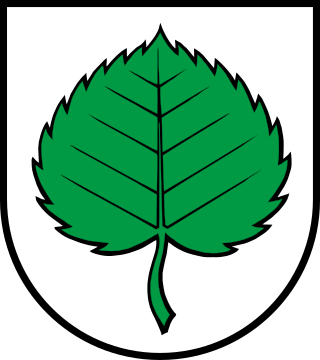
The Fricktal is a region on Northwestern Switzerland, comprising the Laufenburg and Rheinfelden districts of the Swiss canton of Aargau. The region was known as Frickgau in the medieval period, ultimately from a Late Latin [regio] ferraricia, in reference to the iron mine located here in the Roman era, also transferred to the village of Frick as the main settlement.
Landammann, is the German title used by the chief magistrate in certain Cantons of Switzerland and at times featured in the Head of state's style at the confederal level.
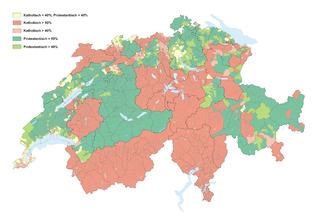
The Protestant Church in Switzerland (PCS), formerly named Federation of Swiss Protestant Churches until 31 December 2019, is a federation of 25 member churches – 24 cantonal churches and the Evangelical-Methodist Church of Switzerland. The PCS is not a church in a theological understanding, because every member is independent with their own theological and formal organisation. It serves as a legal umbrella before the federal government and represents the church in international relations. Except for the Evangelical-Methodist Church, which covers all of Switzerland, the member churches are restricted to a certain territory.
Wiedlisbach is a municipality in the Oberaargau administrative district in the canton of Bern in Switzerland.
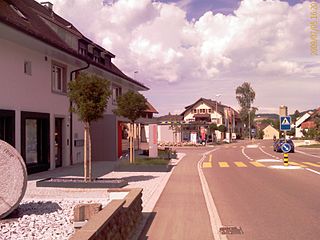
Gipf-Oberfrick is a municipality in the district of Laufenburg in the canton of Aargau in Switzerland.
Switzerland, officially the Swiss Confederation, is a collection of semi-autonomous cantons. As membership of the confederation has fluctuated throughout history, each of these cantons has its own unique history and nobility. Typically, each canton had its own constitution, currency, jurisdiction, habits, customs, history, and nobility.
The Kyburg family was a noble family of grafen (counts) in the Duchy of Swabia, a cadet line of the counts of Dillingen, who in the late 12th and early 13th centuries ruled the County of Kyburg, corresponding to much of what is now Northeastern Switzerland.

Frohberg Castle is a medieval castle ruin in the Swiss municipality of Aesch in the canton of canton of Basel-Land.
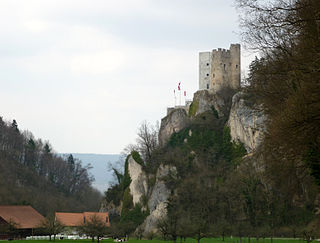
Neu-Thierstein Castle is a ruined castle in the Swiss municipality of Büsserach in the canton of Solothurn, Switzerland.

The Burgdorferkrieg or Kyburgerkrieg was a war in 1383-84 between the counts of Neu-Kyburg and the city of Bern for supremacy in the County of Burgundy in what is now Switzerland.

Nidau Castle is a castle in the municipality of Nidau of the Canton of Bern in Switzerland. It is a Swiss heritage site of national significance.

The Aargau S-Bahn is an S-Bahn-style regional rail network serving the canton of Aargau, Switzerland.

The House of Frohburg was a noble family in medieval Switzerland, with possessions in what is now the canton of Solothurn. They originate in the Wigger basin, near Zofingen. In the 10th century, they built Frohburg Castle on a hill near Trimbach. They had the title of counts from the later 11th century. They ruled the lands between Olten and Solothurn, and took parts of Aargau and Sisgau as fief from the bishop of Basel. They reached the peak of their power in the later 12th and early 13th century, building a number of castles, and founding towns such as Aarburg, Liestal, Olten, Waldenburg, Wiedlisbach and Zofingen. They also founded Schöntal Abbey near Waldenburg. The House of Frohburg was divided into three branches, Neu-Homberg, Waldenburg and Zofingen, in c. 1250. The Zofingen branch was extinct in 1307, followed by the Neo-Homberg one in 1325. The Waldenburg branch survived for another 40 years but declined in influence, being forced to sell most of its possessions, most of them to the ascending House of Habsburg. The last count of Frohburg was Hermann VI.
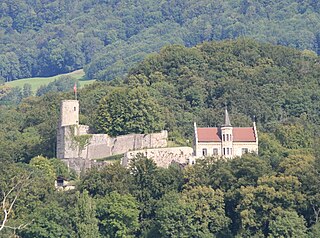
Bipp Castle is a partially ruined castle in the municipality of Oberbipp of the Canton of Bern in Switzerland.

Wiedlisbach Castle is a former tower house and defensive tower in the municipality of Wiedlisbach of the Canton of Bern in Switzerland.
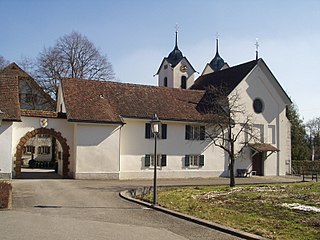
Böttstein Castle is a castle in the municipality of Böttstein in the canton of Aargau in Switzerland.
Alt Homberg Castle is a ruined castle in the municipality of Wittnau in the canton of Aargau in Switzerland. The castle is classified as a Swiss heritage site of national significance.















